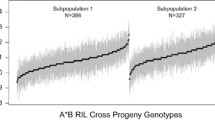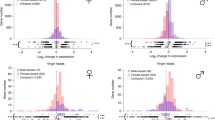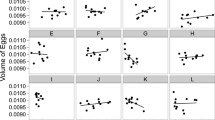Abstract
The preference of Drosophila females to lay eggs on substrates that do or do not contain alcohol is an excellent system to study the evolutionary genetics of behavior, because (1) there is variation in this behavior within and among species, (2) the behavior is amenable to laboratory investigation, and (3) the behavior presumably has a direct relationship to reproductive fitness. Moreover, a key genetic component of the system, the Alcohol dehydrogenase (Adh) locus, is arguably the most well characterized gene known. However, because the Adh gene and its genetic background are inseparable in reproductively isolated species, it is difficult to establish its role in behavioral divergence. By transgene coplacement, we created pairs of strains of D. melanogaster expressing an Adh allele from either D. melanogaster or D. affinidisjuncta, a Hawaiian species with very low levels of ADH in adults. When raised on ethanol-containing medium, the affinidisjuncta–Adh strains experience high mortality relative to the melanogaster–Adh strains. However, affinidisjuncta–Adh females show the same preference for oviposition on ethanol-containing medium as melanogaster–Adh females. Thus, preference for ethanol in these strains is not determined primarily by Adh genotype.
Similar content being viewed by others
REFERENCES
Brennan, M. D., and Dickinson, W. J. (1988). Complex developmental regulation of the Drosophila affinidisjuncta alcohol dehydrogenase gene in Drosophila melanogaster. Dev. Biol. 125: 64-74.
Carr, T. G., Roininen, H., and Price, P. W. (1998). Oviposition preference and larval performance of Nematus oligospilus (Hymenoptera: Tenthredinidae) in relation to host plant vigor. Environ. Entomol. 27:615-625.
Cavener, D. (1979). Preference for ethanol in Drosophila melanogaster associated with the alcohol dehydrogenase polymorphism. Behav. Genet. 9:359-365.
Eisses, K. T. (1997). The influence of 2-propanol and acetone on oviposition rate and oviposition site preference for acetic acid and ethanol of Drosophila melanogaster. Behav. Genet. 27: 171-180.
Fox, C. W. (1993). A quantitative genetic analysis of oviposition preference and larval performance on two hosts in the bruchid beetle, Callosobruchus maculatus. Evolution 47:166-175.
Fox, L. R., and Morrow, P. A. (1981). Specialization: Species property or local phenomenon? Science 211:887-893.
Gelfand, L. J., and McDonald. J. F. (1983). Relationship between alcohol dehydrogenase (ADH) activity and behavioral response to environmental alcohol in five Drosophila species. Behav. Genet. 13:281-293.
Golic, K. G., and Lindquist, S. (1989). The FLP recombinase of yeast catalyzes site-specific recombination in the Drosophila genome. Cell 59:499-509.
Hougouto, N., Lietaert, M. C., Libion-Mannaert, M., Feytmans, E., and Elens, A. (1982). Oviposition-site preference and ADH activity in Drosophila melanogaster. Genetica 58:121-128.
Jaenike, J. (1990). Host specialization in phytophagous insects. Annu. Rev. Ecol. Syst. 21:243-273.
Jones, C. D. (1998). The genetic basis of Drosophila sechellia's resistance to a host plant toxin. Genetics 149:1899-1908.
Kamping, A., and van Delden, W. (1978). Alcohol dehydrogenase polymorphism in populations of Drosophila melanogaster. II. Relation between ADH activity and adult mortality. Biochem. Genet. 16:541-551.
Kim, M. S., Repp, A., and Smith, D. P. (1998). LUSH odorant-binding protein mediates chemosensory responses to alcohols in Drosophila melanogaster. Genetics 150:711-721.
Laurie, C. C., Heath, E. M., Jacobson, J. W., and Thomson, M. S. (1990). Genetic basis of the difference in alcohol dehydrogenase expression between Drosophila melanogaster and Drosophila simulans. Proc. Natl. Acad. Sci. USA 87:9674-9678.
Mayhew, P. J. (1997). Adaptive patterns of host-plant selection by phytophagous insects. Oikos 79:417-428.
Mayhew, P. J. (1998). Testing the preference-performance hypothesis in phytophagus insects: Lessons from chrysanthemum leafminer (Diptera: Agromyzidae). Environ. Entomol. 27:45-52.
McDonald, J. F., and Avise, J. C. (1976). Evidence for the adaptive significance of enzyme activity levels: Interspecific variation in A-GDPH and ADH in Drosophila. Biochem. Genet. 14: 347-355.
McKenzie, J. A., and Parsons, P. A. (1972). Alcohol tolerance: An ecological parameter in the relative success of Drosophila melanogaster and Drosophila simulans. Oecologia 10:373-388.
Moreteau, B., R'Kha, S., and David, J. R. (1994). Genetics of a nonoptimal behavior: Oviposition preference of Drosophila mauritiana for a toxic resource. Behav. Genet. 24:433-441.
Parsons, P. A., and Kling, S. B. (1977). Ethanol: Larval discrimination between two Drosophila sibling species. Experientia 33: 898-899.
Pirrotta, V. (1998). Vector for P-mediated transformation of Drosophila. In Rodriguez, R. L., and Renhardt, D. T. (eds.), Vectors: A Survey of Molecular Cloning Vectors and Their Uses, Butterworths, Boston, pp. 437-456.
Richmond, R. C., and Gerking, J. L. (1979). Oviposition site preference in Drosophila. Behav. Genet. 9:233-241.
Rubin, G. M., and Spradling, A. C. (1982). Genetic transformation of Drosophila with transposable element vectors. Science 218:348-353.
Sadeghi, H., and Gilbert, F. (1999). Individual variation in oviposition preference, and its interaction with larval performance in an insect predator. Oecologia 118:405-411.
Siegal, M. L., and Hartl, D. L. (1996). Transgene coplacement and high efficiency site-specific recombination with the Cre/loxP system in Drosophila. Genetics 144:715-726.
Siegal, M. L., and Hartl, D. L. (1998). An experimental test for lineage-specific position effects on alcohol dehydrogenase (Adh) genes in Drosophila. Proc. Natl. Acad. Sci. USA 95:15513-15518.
Singer, M. C., Ng, D., and Thomas, C. D. (1988). Heritability of oviposition preference and its relationship to offspring performance within a single insect population. Evolution 42:977-985.
Smith, D. P. (1996). Olfactory mechanisms in Drosophila melanogaster. Curr. Opin. Neurobiol. 6:500-505.
Sofer, W. H., and Hatkoff, M. A. (1972). Chemical selection of alcohol dehydrogenase negative mutants in drosophila. Genetics 72:545-549.
Spradling, A. C., and Rubin, G. M. (1982). Transposition of cloned P elements into Drosophila germ line chromosome. Science 218:341-347.
Thompson, J. N. (1988). Evolutionary ecology of the relationship between oviposition preference and performance of offspring in phytophagous insects. Entomol. Exp. Appl. 47:3-14.
Thompson, J. N., Wehling, W., and Podolsky, R. (1990). Evolutionary genetics of host use in swallowtail butterflies. Nature 344: 148-150.
Van Delden, W. (1982). The alcohol dehydrogenase polymorphism in Drosophila melanogaster: Selection at an enzyme locus. Evol. Biol. 15:187-222.
Via, S. (1986). Genetic covariance between oviposition preference and larval performance in an insect herbivore. Evolution 40:778-785.
Voelker, R. A., Langley, C. H., Leigh Brown, A. J., Ohnishi, S., Dickson, B., Montgomery, E., and Smith, S. C. (1980). Enzyme null alleles in natural populations of Drosophila melanogaster: Frequencies in a North Carolina population. Proc. Natl. Acad. Sci. USA 77:1091-1095.
Author information
Authors and Affiliations
Corresponding author
Rights and permissions
About this article
Cite this article
Siegal, M.L., Hartl, D.L. Oviposition-Site Preference in Drosophila Following Interspecific Gene Transfer of the Alcohol dehydrogenase Locus. Behav Genet 29, 199–204 (1999). https://doi.org/10.1023/A:1021648103496
Issue Date:
DOI: https://doi.org/10.1023/A:1021648103496




